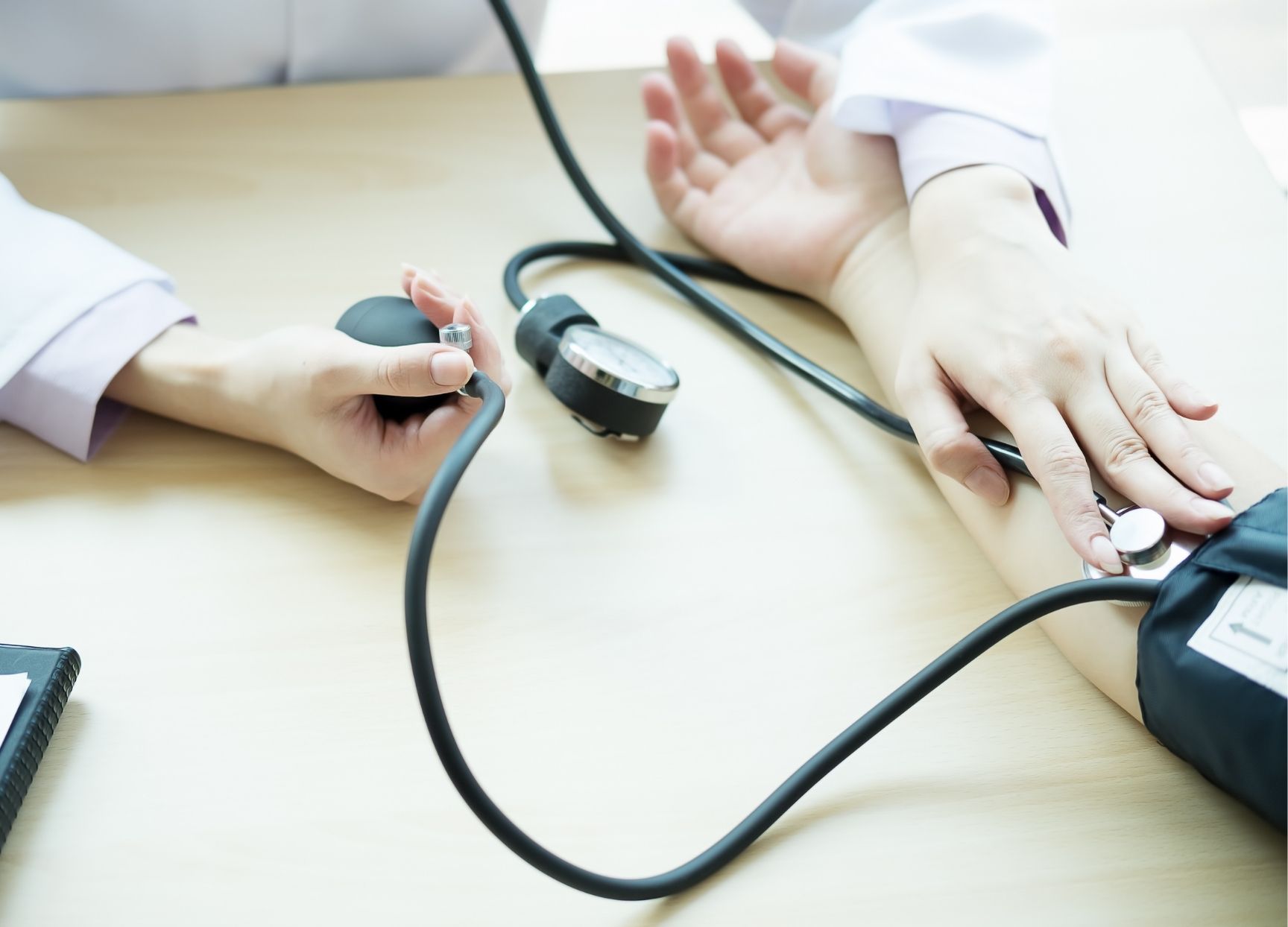The Benefits of the ABPM Examination for Accurate Blood Pressure Analysis
Ambulatory Blood Pressure Monitoring (ABPM) provides an advanced technique to reviewing blood stress. This approach gives continual, 24-hour data, catching fluctuations that happen throughout day-to-day tasks and rest. Such detailed monitoring not just enhances precision but additionally reveals essential patterns, aiding to differentiate between real high blood pressure and conditions like white-coat disorder. Comprehending these subtleties can result in more reliable therapy strategies. What effects might this have for person care and monitoring?
What Is Ambulatory Blood Pressure Monitoring (ABPM)?
Ambulatory Blood Pressure Monitoring (ABPM) is a technique that permits constant blood stress evaluation over a 24-hour duration, offering a substantial image of an individual's high blood pressure changes. ABPM test in Bangalore. This method makes use of a mobile gadget that immediately determines blood pressure at routine intervals throughout the day and evening. As people set about their everyday activities, the tool captures data reflecting their blood stress variations throughout various times and conditions, consisting of sleep and physical exertion.ABPM is especially useful for diagnosing conditions such as hypertension, as it can compare true high blood pressure and white-coat syndrome, where people show elevated analyses in scientific settings however not in their day-to-day lives. By providing an in-depth sight of high blood pressure modifications, ABPM aids doctor in making informed choices concerning diagnosis and therapy. Additionally, it boosts the understanding of blood pressure patterns, enabling individualized monitoring strategies for people
Constant Monitoring for Improved Accuracy
Continual monitoring of high blood pressure through ABPM greatly enhances the accuracy of readings contrasted to conventional approaches. This method enables for blood stress dimensions at routine intervals throughout the night and day, recording variations that may take place because of daily tasks, tension, or various other variables. Unlike solitary readings taken throughout a center visit, ABPM offers a thorough account of a person's blood pressure over a 24-hour period.This constant evaluation causes extra reputable information, enabling healthcare companies to determine patterns and potential issues that might go undetected with occasional dimensions. It also helps compare real hypertension and white-coat syndrome, where clients show raised analyses because of anxiety in a scientific setting. By leveraging the advantages of constant monitoring, ABPM considerably improves medical diagnosis and therapy strategies, eventually adding to better client results and even more tailored health care strategies.
Recognizing Blood Pressure Irregularity
Blood pressure variability refers to the variations in high blood pressure readings that can happen gradually due to different factors, including physical activity, stress and anxiety, and circadian rhythms. This irregularity is substantial as it offers understandings into a person's cardiovascular health. ABPM test in Bangalore. As an example, elements such as exercise can briefly enhance blood pressure, while leisure may result in a decline. Furthermore, the body's natural rhythms can create high blood pressure to vary throughout the day, normally being lower during the night and higher throughout waking hours. High degrees of irregularity have been associated with increased threats of cardio occasions, making it vital for health care specialists to check these variations. Understanding blood pressure irregularity assists in customizing therapy strategies and evaluating overall health. Exact appraisal with approaches like Ambulatory Blood Stress Monitoring (ABPM) can record these variants, enabling an extra extensive exam of a person's blood pressure profile
Determining White Coat Hypertension
White coat high blood pressure, commonly referred to as white coat disorder, is identified by elevated high blood pressure readings in scientific settings due to anxiety or tension. Recognizing its signs and symptoms and indications is vital for exact medical diagnosis, as misinterpretation can result in unnecessary treatments. Recognizing this phenomenon is necessary for reliable high blood pressure monitoring and client treatment.
Comprehending White Coat Syndrome
Lots of patients display elevated blood stress readings in clinical setups, this phenomenon, known as white layer hypertension, can obscure the real state of their cardiovascular wellness. This problem takes place when people experience anxiousness or stress throughout clinical sees, causing short-term spikes in high blood pressure. Therefore, healthcare suppliers may misinterpret these readings as a sign of hypertension. White coat syndrome highlights the significance of exact blood pressure analysis, as depending only on in-office dimensions can result in unneeded treatments or misconceptions concerning a person's wellness. Recognizing this disorder is important for medical professionals, as it underscores the demand for different monitoring approaches, such as ambulatory high blood pressure monitoring (ABPM), to acquire a more precise depiction of a patient's blood pressure degrees.
Symptoms and Indicators
Lots of people might experience particular symptoms that suggest the visibility of white layer hypertension. These signs and symptoms can include raised blood stress analyses during medical visits, gone along with by feelings of stress and anxiety or anxiousness in a medical setting. People often report a fast heartbeat or sweating when connecting with health care specialists, which might aggravate their blood pressure levels. In addition, some people might see a variation between their in-office blood pressure readings and those taken at home, where they feel why not try here much more unwinded. Recognizing these symptoms is necessary, as they can suggest that anxiety or anxiousness associated to medical setups is influencing their blood stress. Comprehending these indicators can help in identifying white layer hypertension and establishing the requirement for additional analysis.

Value of Accurate Medical Diagnosis
Accurately diagnosing white layer high blood pressure is critical for reliable high blood pressure administration. This problem takes place when an individual displays elevated high blood pressure readings in a scientific setting due to stress and anxiety or anxiety, while typical analyses are taped in an extra loosened up setting. Misdiagnosis can bring about unneeded treatment, exposing people to possible drug adverse effects without any kind of genuine wellness advantage. Making use of ambulatory high blood pressure monitoring (ABPM) is very important in differentiating real hypertension from white layer disorder. ABPM supplies continual high blood pressure dimensions over 24-hour, permitting a comprehensive evaluation that can help healthcare service providers make notified choices. Ultimately, accurate recognition of white layer high blood pressure guarantees people receive appropriate care and avoids the mistakes of mismanagement.
Examining Nighttime Blood Pressure Patterns
Evaluating nocturnal blood stress patterns is essential for comprehending a person's total cardio health. Nighttime dimensions can expose considerable changes in high blood pressure, which might indicate high blood pressure variability. Additionally, these patterns are very closely associated with heart health, highlighting the significance of continual monitoring past standard workplace check outs.
Importance of Evening Measurements

Nighttime blood pressure measurements are often crucial for understanding a person's overall cardio health and wellness. These analyses give vital understandings right into exactly how blood pressure behaves throughout rest, which can vary significantly from daytime degrees. Checking nighttime high blood pressure enables the recognition of abnormal patterns, such as non-dipping or reverse-dipping phenomena, which might suggest an increased risk for cardio occasions. In addition, nighttime analyses can assist assess the efficiency of antihypertensive therapies, guaranteeing that drugs are suitably handled. By catching high blood pressure changes during the more info here night, medical care experts can create a lot more customized therapy plans, inevitably improving patient results and reducing the chance of long-lasting issues connected with high blood pressure. This stresses the value of extensive high blood pressure evaluation throughout the day and evening.
Spotting Hypertension Variability
How can the irregularity of nighttime high blood pressure patterns educate hypertension management? The analysis of nocturnal blood stress through the Ambulatory Blood Pressure Monitoring (ABPM) test exposes essential fluctuations that often go unnoticed in traditional measurements. These patterns can indicate the visibility of "non-dipping" hypertension, where blood pressure stops working to go down during rest, recommending a boosted cardiovascular danger. By recognizing such irregularity, healthcare companies can customize treatments better, adjusting treatment plans based on the person's certain nighttime blood stress actions. Understanding these patterns also help in evaluating the efficacy of antihypertensive drugs, guaranteeing that people achieve perfect blood pressure control throughout the day and night. Nocturnal evaluation comes to be necessary in complete high blood pressure administration.
Connection With Heart Health And Wellness
Comprehending nighttime blood pressure patterns not just aids in hypertension monitoring however also has substantial effects for heart health. Research suggests that irregular nocturnal blood pressure analyses, such as non-dipping or reverse dipping patterns, are related to raised cardiovascular risks. During sleep, blood pressure commonly declines, a phenomenon essential for cardiovascular recuperation. When this decline is absent, it may indicate underlying concerns such as free disorder or boosted arterial stiffness. Furthermore, people with elevated nighttime high blood pressure go to an increased threat for cardiovascular disease and stroke. Utilizing ambulatory blood stress monitoring (ABPM) to examine these nocturnal patterns can provide vital insights, enabling for tailored interventions that much better secure heart health and boost overall person outcomes.
Customizing Therapy Strategies Based Upon Real-Life Data
Tailoring treatment strategies based on real-life data entails leveraging continuous blood pressure monitoring to create individualized healthcare methods. The Ambulatory Blood Pressure Monitoring (ABPM) test offers a detailed account of an individual's blood stress variants throughout day-to-day tasks. This in-depth information allows doctor to determine patterns that may be ignored in traditional workplace visits.By evaluating fluctuations in blood stress throughout various times and conditions, clinicians can adjust medications, dosages, and way of living referrals to far better suit individual person requirements. This personalized strategy not just enhances the performance of treatment strategies yet also lowers the chance of damaging reactions to medications.Furthermore, real-life information can disclose internet prospective triggers for high blood pressure, resulting in aggressive interventions. On the whole, customizing treatment based upon constant monitoring fosters an extra efficient, patient-centered method to taking care of hypertension and boosting long-lasting health end results.
Boosted Person Compliance and Involvement
While standard monitoring approaches may limit person participation, making use of Ambulatory High blood pressure Monitoring (ABPM) significantly enhances patient compliance and interaction in their very own healthcare. By allowing patients to wear a portable device that tapes high blood pressure over 24 hr, ABPM equips people to take an active role in their health and wellness monitoring. This continuous monitoring supplies a much more complete view of blood stress variations, encouraging patients to recognize their condition better.Moreover, ABPM promotes a setting where patients can review their readings with doctor more meaningfully, bring about informed decision-making. Patients end up being extra spent in sticking to prescribed treatments and way of living adjustments when they see real-time data reflecting their wellness status. Consequently, the change from passive individual to energetic collaborator not just enhances compliance however additionally enhances overall health and wellness outcomes, making ABPM a useful device in fostering individual interaction in high blood pressure management.
Often Asked Concerns
For how long Does an ABPM Examination Normally Last?
The ABPM test commonly lasts 24-hour. During this duration, it measures high blood pressure at routine intervals, giving a detailed evaluation of a client's high blood pressure patterns throughout their day-to-day activities and sleep.
Exist Any Kind Of Risks Related To ABPM Testing?

Can ABPM Be Made Use Of for Kids and Adolescents?
ABPM can be made use of for children and teenagers, providing essential understandings into their high blood pressure patterns. However, correct tools sizing and interpretation by trained specialists are critical to assure exact analyses and avoid misdiagnosis.
Just How Is ABPM Different From Typical Blood Pressure Monitoring?
ABPM differs from conventional monitoring by providing constant high blood pressure readings over 24-hour, recording variants throughout day-to-day activities and rest, whereas typical approaches often depend on solitary measurements, possibly missing out on vital fluctuations in high blood pressure.
What Should People Do Throughout the ABPM Test?
During the ABPM examination, clients ought to keep typical tasks while staying clear of hefty workout, too much caffeine, and cigarette smoking. They should likewise keep their arm still when the tool pumps up, ensuring accurate analyses throughout the monitoring duration.